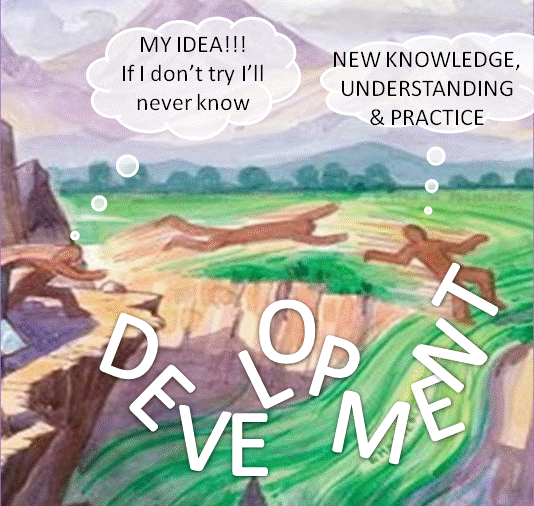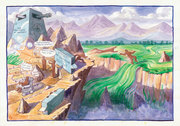This week I reached 20 respondents to my email survey of creativity in educational development. This was the target I had originally set myself so I was of course delighted. The results will form one of the chapters in the e-book. I felt it was time to try to engage the wider community so with JW's help we put our creativity questionnaire on-line and invited SEDA members to participate in the survey. We needed an image for the survey so I adapted a picture by Julian Burton to suit the purpose (above). I also used this image to encourage Kiboko to develop his version of the narrative that is conveyed in this picture as its an important one.
REFLECTIONS ON MY ECOLOGY FOR CREATIVITY
One of my tactics to grow my own understanding of what creativity means to me is to create a narrative of what I have done to develop the knowledge for the talks I am giving in the next few weeks - what I now see as an ecological process for knowledge development and self-development. I can use this narrative to examine my own creativity. One of the ways I am doing this is to use a number of tools I have found to help me think and reflect on my own developmental narrative. In the next few weeks I will share my reflections through my blog.
In my internet wanderings I came across a blog by Darlene Chrissley on the theme of The Ecology of a Creative Life. In it she says, 'It has taken me fifty years to understand my own personal ecology; the conditions that best support me as a creative being. My ideal ecology balances four distinct quadrants: Introspection, Expedition, Integration and Exhibition. Over time I have adopted a set of creative practices that support me in each quadrant. When I make space for each one and move between them in an easy flow I am happy and productive and my work is original and meaningful.' Darlene Chrissley (2012).
I liked the implication in this ecological view of creativity that the four elements work together rather than sequentially as in so many other models of creative processes. . I have mapped below her four quadrants and my reflections on my own process in respect of each of these four dimensions of her creative ecology.Broadly speaking the model seems to work for my creative ecology although I do not see exhibition as an entirely final stage process and my introspection is far more contextualised than hers.





 RSS Feed
RSS Feed